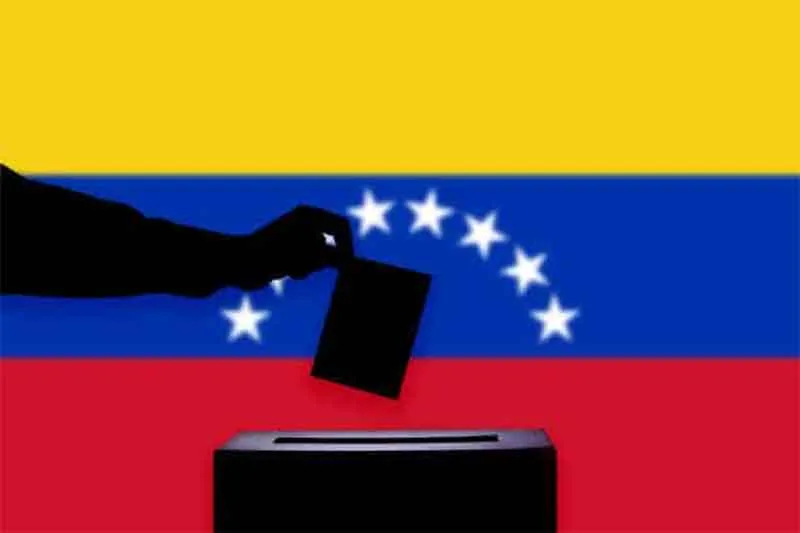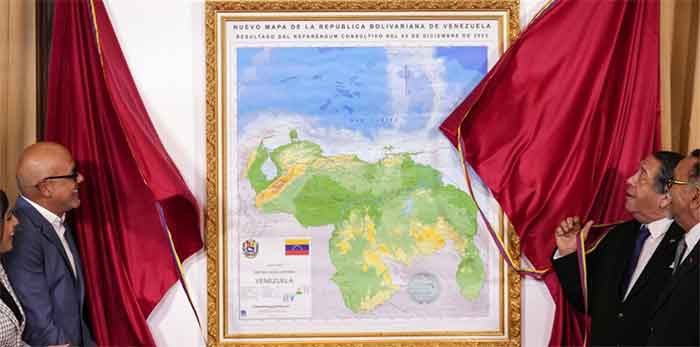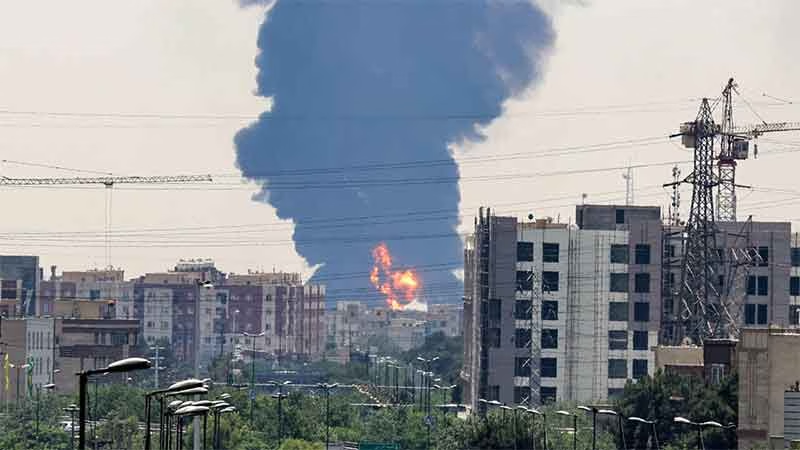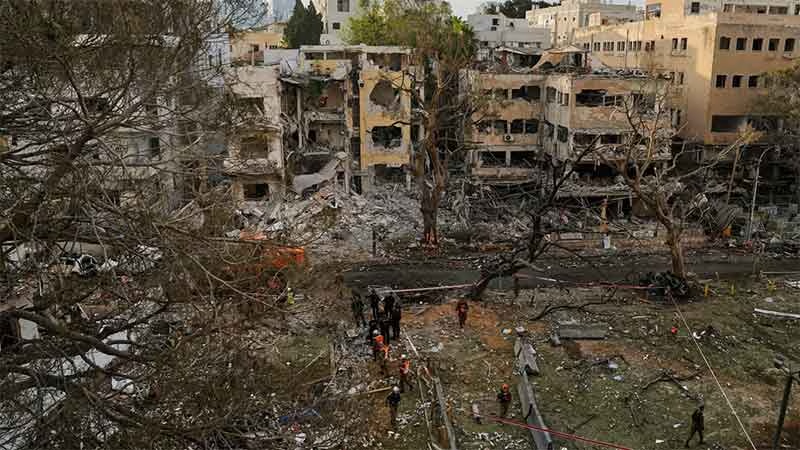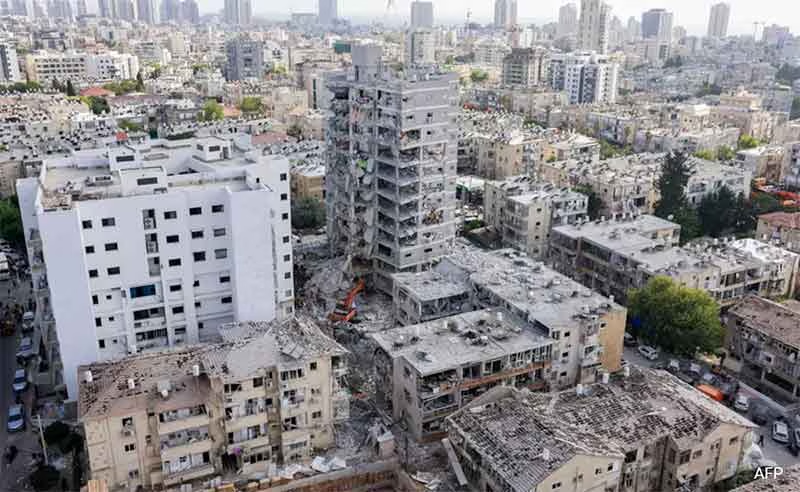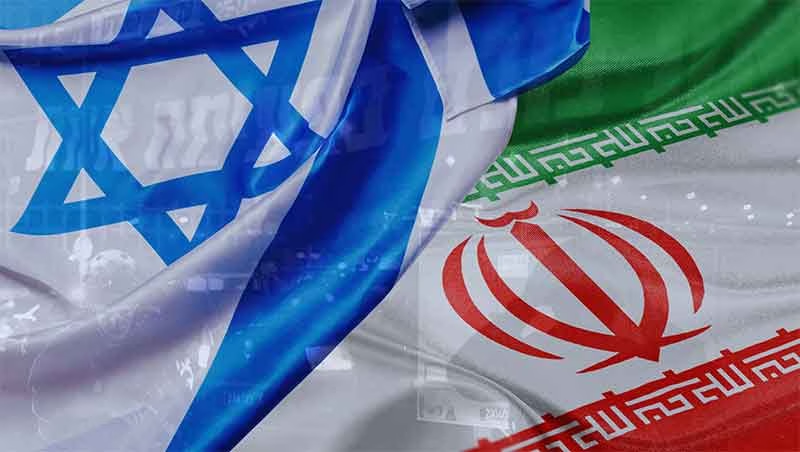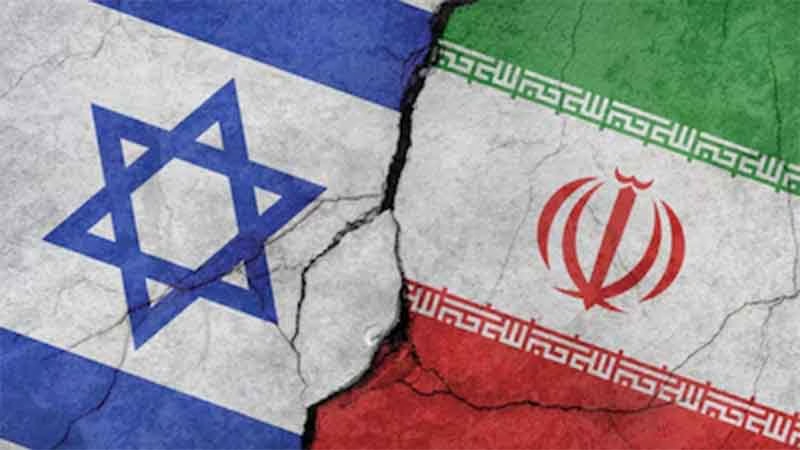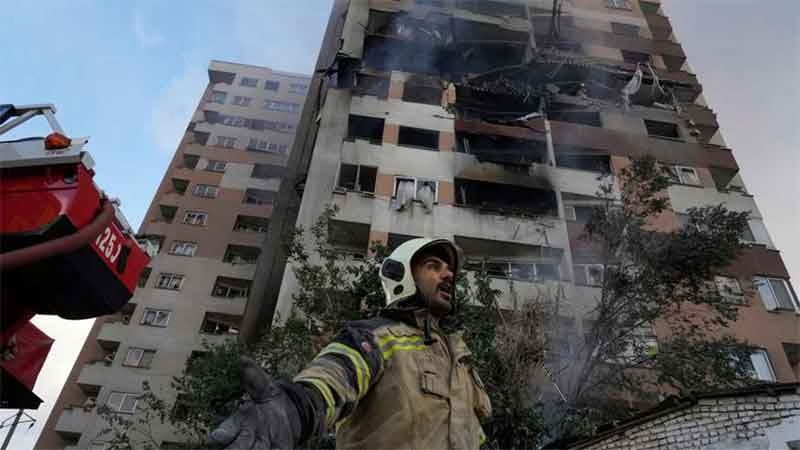
I was in Venezuela from April 26 to May 5, 2019. It was the fifth time I have been there in a span of 14 years, so I was able to put things I saw on this trip in that context.
My first visit was in 2005. I saw people begging, sleeping in doorways, street venders filling not just sidewalks, even whole streets in some areas.
But I also saw bundles of books being distributed house to house, following a campaign to teach everyone to read. I visited clinics in poor neighborhoods staffed by Cuban medical personnel. I saw independent radio stations run by people in their communities, broadcasting local news, and providing a platform for commentary on current events. Stores had basic foods at affordable, subsidized prices. “Missions,” funded directly by oil revenues so as to bypass government ministries, were addressing social problems that bureaucracies from the pre-Chávez government failed to resolve.
In 2005, people eagerly told me stories of recent years. On April 11, 2002, a coup led by generals and business leaders had kidnapped President Chávez for two days. Massive demonstrations restored him to power. Soon after that, the owners of big businesses and the top management of the nationally owned oil company staged a “lock-out,” closing their own factories and stores and intimidating smaller businesses to join them. They shut down oil production. Their tactics didn’t work; people improvised and eventually the “lock-out” collapsed. All this did great damage to the economy in 2003 and 2004 and was one of the causes of poverty in 2005.
I returned to Venezuela in 2008, 2014, and 2015. By the end of that ten- year period the country had been transformed. There was no one begging. I saw no one sleeping in doorways, and I saw construction happening everywhere — a massive housing program, building literally millions of urban and rural dwellings. Going around the country I saw countless signs of positive efforts that were enriching and improving the lives of people living in less affluent areas. Laptop computers were being distributed to schoolchildren for free. Community gardens, sports facilities, neighborhood clinics, price controls that kept food affordable, infrastructure improvements of all kinds.
Sabotage, coup plots and riots by the upper classes have been endemic throughout the 20 years of Chavismo. They made normal life in Caracas especially difficult for working people in the city in 2014, when corporate media gave the riots intense coverage, misrepresenting them as peaceful protests. Financial manipulation brought about hyperinflation. And now, after years of working behind the scenes to help the opposition undermine the country, the United States has begun a series of overt attacks — seizing Venezuela’s assets, threatening military action, and attempting to install Guaidó in the presidency.
Over the last year reports about Venezuela in the corporate media have been depicting a country undergoing a “humanitarian crisis.” What they described was not consistent with what I know about the country, and I wondered what was actually happening. To find out, I traveled with a group of other North Americans who wanted to see the reality on the ground, and how the majority, the “popular classes,” were responding to the pressure of economic sanctions and threats of war.
My first impression was the scene on the streets. I was wondering if there would be signs on the streets of those same conditions returning — begging, homelessness, street vending. What I saw was surprising. Things looked so normal. People were going to work, relaxing on the weekend, just as they had been on my more recent visits. Media in the US and around the world were creating an image of desperate suffering, hardship and chaos, but I did not see signs of that on the street. No begging, no homeless, no masses of peddlers. There was food in restaurants and stores, business as usual in retail shops, and people were working at their jobs.
Although life appeared outwardly normal, I soon learned about the two big problems beneath the surface: inflation and the blockade.
The government is trying to deal with one aspect of inflation by providing food through a system known as CLAP, an acronym of the Spanish words for Local Committees to Supply the People. Every two weeks bundles of basic foods like rice, beans, oil, sugar, etc. go directly to households, distributed by neighborhood committees. There is enough food in the bundle for people to survive on, but just barely. If supplies run out, food is available in stores, but some people’s salaries have not kept up with inflation. There are other ways that some get food — school lunches, etc, — but many suffer from the problem of not being able to afford to buy what they need, food and other things.
The second problem is the blockade on imported products. Venezuela has the industrial capacity to produce a substantial amount of what the country consumes. The road to the west of Caracas, for example, goes past huge plants, large populations of working people, highways full of big trucks hauling things to stores. But no country of 30 million people can produce all the things it needs. Countries have to import things, from medicine for specific diseases like HIV, to spare parts for most of the cars in the country. The blockade creates a lot of suffering.
On the other hand, the popular classes are in a much better position to withstand economic war than they were in earlier years. Free health care, education, and many other basic needs are available. Very important among these is housing. In the past 8 years the government has built 2.6 million homes, rural and urban. Enough to provide a new home to one third of the population. The goal is 5 million.
On past visits I have ridden past big blocks of apartment buildings, many under construction. One group after another, it takes many minutes to pass them, speeding along the highway. I thought about big apartment complexes for poor people in the US that turned out so badly, and wondered how these would be different. This recent visit was the first time I had an opportunity to see one of those developments from inside, and my question was answered.
Our group happened to be in Caracas at the time of a big conference about housing. Delegates from many countries were there to learn about Venezuela’s remarkable achievement. We were invited to attend, and we went with a busload of other “internationals” to the state of Vargas, on the coast of the Caribbean.
We saw a community of apartment buildings that house 32,000 people, many who had lost everything in the catastrophic mudslides of 1999, when whole communities in the area were swept out to sea. The buildings are designed to include much more than housing: childcare, cooking and dining, meeting and educational space, sports courts, a community radio station…a long list. The community manages its affairs through communal councils.
These spaces make it easy and natural for people of all ages to get together. We had a taste of this as we were welcomed with a concert by young people who had learned to play their instruments through el sistema. The star of the show was a girl of 8 or 9 who sang three long songs from memory, in a strong, confident voice. It seemed like a good place to raise kids.
This kind of housing would soon be history if the opposition were to come to power. Soon after they won a majority in the National Assembly they attempted to privatize the millions of homes the government had built, so landlords could buy them up as rentals and speculative investments. The Supreme Court was able to block that move, but if the opposition were in power they would do it.
We had come to Venezuela to learn how the popular classes are responding to the economic attacks and military threats from the US. One very visible response is that they are joining the militia; we were impressed by how this has been taken up. Our visit coincided with two demonstrations and two Sundays: four days when militia members did not need to dress in routine work-day clothing, and chose to wear their distinctive khaki uniforms in the marches and as they strolled around the plazas and shops. People of literally every adult age, and both sexes. It seemed there are about as many women as men. Even more remarkable was the number of people who are quite old, many in their seventies.
These militia groups train regularly. Their guns are kept in secure locations in communities around the country, close to where they might be needed. It was recently announced that the militia will be responsible for delivering the packages of food to be distributed to neighborhoods. This is a prudent measure given the history of violent attacks on medical clinics and other services provided to the popular classes. There are one and a half million members of the militia at this time, the goal being two and a half million.
Another response of the popular classes is a massive effort to produce food, through urban agriculture as well as in the countryside. We visited one substantial facility in Catia, a large hilly section at the western end of Caracas, where four communes with a total population of about 150,000 have created an urban farm named after Fabricio Ojeda, a revolutionary who died in the struggles against the oligarchy in the last century.
The farm’s biggest crop is organic tomatoes: 16 tons. They are grown in structures that resemble greenhouses from a distance, but are actually covered with a mesh that shields tomatoes from the harsh tropical sun. Many other vegetables are raised, as well as pigs and chickens. These things are happening all over. What drew us to this farm was the start-up of an innovative program to produce a new kind of inexpensive, high quality meat for the community.
Elvin Merlo is a city hall employee who submitted a proposal for a project: raising rabbits for meat. He was allowed a start-up budget and a year at his regular salary to make it happen. He enthusiastically showed us his cages of rabbits of all ages, and lots of tiny babies. He feeds the rabbits a local grass and a plant of the amaranth family similar to what we call pigweed here in Vermont. He also gives them a mixture of ground corn, eggshells and a pinch of cement for calcium. He hopes to have a big enough herd to start harvesting them in about a year. When that time comes he will put in a request for refrigeration and other equipment to provide meat to the community at a fair, affordable price.
Elvin is very clear about his motivation for this project; it is a direct response to the US blockade on food and other necessities. This is an action of peaceful resistance against economic war. As we talked, he said, “We want peace, but we are ready to die to defend our country and people.”
A third form of resistance that we saw unfolding was more subtle, but perhaps the most crucial: the creation of communal democracy, a form of self government that is participatory as opposed to the representative form that we are familiar with. This is a process that is rarely, if ever, mentioned by the corporate media. It is often unappreciated even by those on the left who know it exists.
In the last half of the twentieth century, agriculture was extinguished by oil money and impoverished people settled in improvised housing on the steep hills around the cities. The government provided the bare minimum of services. People had to organize to get any kind of response, whether it was blocking a highway to get electricity, or organizing a self-defense force to do what the police were supposed to be taking care of. This tradition took root well before Hugo Chávez became President, but when he did, “popular power” surged ahead with the support of the government.
In 2014, my wife and our son came with me on a trip that took us to Barquisimeto, Venezuela’s fourth largest city. We met with more than a dozen people from neighborhoods in the city, each from a “communal council,” a geographically defined group of a few hundred households that was empowered to make decisions about infrastructure and other needs, and also — crucially — encouraged to devise productive ways to meet those needs by communal organization. The process of consolidation of those communal councils into larger units was just getting under way, and there was sharing of experiences, like the council that requested money from the government to put in sidewalks, and managed to install twice the amount in the plan by spending the money on materials and doing the labor themselves.
In Caracas that year we visited a high tech rooftop tomato house with organic methods of keeping insects at bay. This was another example of production by a communal council. Things that employed people sewing, repairing, caring for children, cooking, etc. were being organized and supported through the communal councils. Now, five years later, our group could see how the process of building a communal society was moving along.
Catia is an area in the western part of Caracas: steep, narrow streets, houses built for themselves by the people who settled on hills that were once the edge of town. Our driver stopped at the police station, a safe place to park the van and to let them know why we were there. Two police women in their blue and gray camouflage led our group of gringos as we hurried, behind schedule, down the narrow streets to a community center in an old building.
Fortunately, our timing turned out to be perfect. There had been workshops since 4 PM in the afternoon, and they had reported out to the full group. At 7:30 they had just begun to sum up. After we briefly introduced ourselves they got back to work.
This was a meeting of voceros, or spokespeople, from three communes, with a total population of about 100,000. They were writing the constitution for a new communal city made up of their three communes.
The meeting was relaxed and informal, with two women at the front of the room writing down points of agreement on big sheets of paper taped to the wall. When we came in one of them was checking the Law of Communes to be sure they were not missing anything. As they worked people mentioned projects that could be undertaken now that they were big enough. For example, there are about 30 wells in the area that have been dug by individuals or businesses. They need to be properly evaluated and linked into a system. A survey of what people are producing in the way of food, clothing and other things will yield information that can be used to plan and coordinate.
Someone mentioned how important it is to create a seed bank, since the blockade has cut the country off from normal suppliers. I was delighted to be able to present them with a package of seeds for honeynut squash. The person I gave them to asked if they are non-GMO, and I assured her that they are from Vermont — totally natural. (Some years ago there was a lot of debate in Venezuela about whether to use GMO seeds, along with all the chemicals they require. The blockade has settled that argument.)
Near the end of 2012, not long before President Chávez died, he made a speech in which he urged a sharp change in course for the revolution, an acceleration of the movement toward communes. “Comuna o nada,” was his assessment of the future, “Commune or nothing.”
But the PSUV (United Socialist Party of Venezuela) and the government are structures with their own interests and their own logic. Turning over power to a new and very different governmental structure has been met with a mixed reception in official circles. The result is frustration and conflict between the communes and state and/or party officials. I heard commune leaders in Caracas in 2015 referring to symptoms of this contradiction in explaining the poor showing of the PSUV in the National Assembly election that had just happened. No one brought such things up in conversation this time, but reports in venezuelanalysis.com and other sources make it clear that those tensions continue to play a role, notably in relatively remote agricultural areas.
The people of Comuna de Explosión del Poder Popular in Catia, along with others all over the country, are taking Chávez’s “Comuna o nada” very seriously. They are reorganizing their system of government in the midst of a blockade, while being threatened with an invasion or a campaign of terroristic violence similar to the contra-war in Nicaragua. Far from being a distraction, this is an integral part of their strategy of resistance, a way of encouraging the ingenuity and enthusiasm of the people. The Venezuelan state apparatus and the Socialist Party have their roles, but the Venezuelan people are ready and able to participate in governing themselves. Chávez advocated an acceleration of the revolution as the only way to make it succeed, and that is what we saw in Catia.
The role of President Nicolas Maduro has been evolving as the crisis continues. He has often been criticized by activists of the Venezuelan left for his cautious, conciliatory approach to the opposition. Chávez, in contrast, made bolder moves that enabled him to keep the initiative. Also, given his position as leader, the shortcomings of Maduro’s government and his party inevitably affect his reputation. But the current attack by the US and its allies has pushed many of those concerns into the background. Maduro’s staying in office has become a symbol of national sovereignty.
I noticed in the discussion in Catia that Maduro’s name came up more than once in a positive way, implicitly linking him with their communal city project. Since those people were spokespeople for 100,000 commune members, their attitude would seem to be reflective of their communities.
Our group spent a fair amount of time mingling with people in public places: two Sundays in the Plaza Bolívar (with children’s games and entertainment), a big outdoor evening dance party, etc. We were obviously gringos, and before long we would be having conversations. People were glad to see us and quickly understood that we were opposed to what our government is doing. Then it was time for a photo. Arms around shoulders, tall people in back, fists in the air, and “Viva Chávez! Viva Maduro!” as the picture was snapped. Both names together, always.
I didn’t encounter anyone who expressed any reservation about Maduro being the legitimate president. Based on my observations, I would say that US sanctions have strengthened his support among the common people who make up his political base.
But there are those who differ. Our group became aware of the disturbances that happened on the morning of April 30, when Juan Guaidó staged his coup attempt, because we saw it on TV — some dozens of men throwing stones at the airport building while their upper class supporters watched from a safe distance on an overpass. Also an interview with a young soldier, indignant that he had been tricked into appearing as a prop for Guaidó’s media event.
None of this had any effect on the streets around our hotel (several miles from the scene on TV), except that before breakfast we heard the sound of people banging on pots, and then some explosions that were either shots or firecrackers. Evidently no one in the neighborhood was responding to Guaido’s call to demonstrate in various parts of the city, assuming that’s what the noise was about. The commotion was all over by the time I walked a block to Sabana Grande, the big pedestrian street where people gather. All I saw was people hustling to their early morning destinations.
The popular classes of Venezuela are the real protagonists in this story. They are inventing the structure of the society that they want to live in. They have a living tradition of political ingenuity along with an openness to genuine revolution. The current asymmetrical economic war against them has brought them to a high level of unity in their determination to defend what they have achieved in developing their country. These assets will help them survive.
But there is one important factor missing: international understanding of the nature of their struggle. The Venezuelan popular classes are, at this time in world history, at the leading edge of revolutionary change. They deserve our support.
Peter Lackowski, a retired teacher living in Burlington, Vermont, was member of a delegation on a visit to Venezuela during and after the failed right-wing coup d’état on April 30, 2019.
This article was published first by Counterpunch on May 17, 2019





